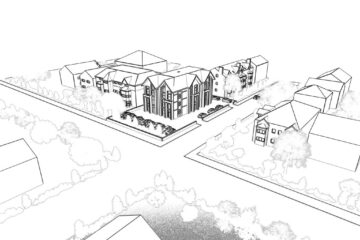Feasibility studies are an essential part of the architectural design process. They help to determine whether a project is viable, identify any potential problems or challenges, and establish a realistic budget and timeline.
In this blog post, we'll explore the importance of feasibility studies in architectural design and how they can benefit your construction project.
What is a Feasibility Study?
A project's viability is examined in a feasibility study. A review of the project site, an assessment of the project objectives, a review of the budget and schedule, and the identification of any potential risks or difficulties are often included. A feasibility study aims to decide whether a project is worthwhile of being pursued and to pinpoint any elements that might have an impact on its success.
The Importance of Feasibility Studies
Feasibility studies are crucial for a number of reasons. Prior to making any big investments, they aid in ensuring that a project is viable. A feasibility study can spot potential issues or difficulties that might appear during construction, allowing designers and contractors to make changes before work really starts.
Feasibility studies also help to establish a realistic budget and timeline. By analysing the project goals and requirements, architects and builders can determine the resources needed to complete the project and create a budget and timeline that are both achievable and realistic. This can help to prevent cost overruns and delays during the construction process.
Another benefit of feasibility studies is that they can help to identify potential risks and challenges. This may include issues such as zoning regulations, environmental concerns, or structural problems with the site. By identifying these risks early on, architects and builders can take steps to mitigate them and ensure that the project is completed successfully.
Feasibility studies also help to ensure that a project meets the needs of its intended users. By analysing the requirements of the project, architects and builders can determine whether the design will meet the needs of its intended users. This may include considerations such as accessibility, functionality, and aesthetics.
The Feasibility Study Process
The feasibility study process typically involves several key steps. These may include:
- Site analysis: This entails examining the location to find any potential issues or difficulties that might have an impact on the project. These could involve things such as site-specific structural constraints, environmental issues, or zoning restrictions.
- Project goals and requirements: At this step, the project goals and requirements are reviewed to ascertain what is required to meet the goals. This may take into account factors like usability, aesthetics, and accessibility.
- Budget and schedule: Here, we take a look at the resources required to finish the project along with a realistic timeframe.
- Risk assessment: This entails locating any potential dangers or difficulties that might appear throughout the construction process. These may involve matters like zoning laws, environmental challenges, or site-specific structural issues.
- Feasibility report: The final report summarises the feasibility study's findings and offers suggestions for how to move forward with the project.
Conclusion
Feasibility studies are an essential part of the architectural design process.
They help to ensure that a project is viable before any significant investment is made and can identify potential problems or challenges that may arise during the construction process.
Feasibility studies also help to establish a realistic budget and timeline and ensure that a project meets the needs of its intended users.
If you're planning a construction project, it's important to work with an experienced architectural design team that can guide you through the feasibility study process and ensure the success of your project.










